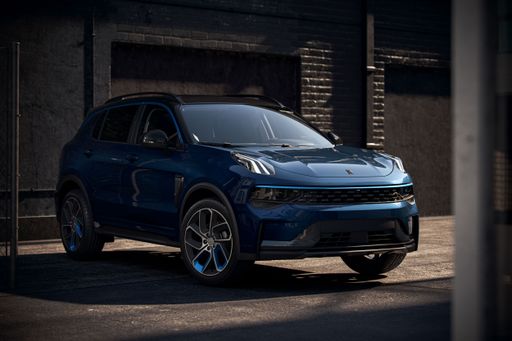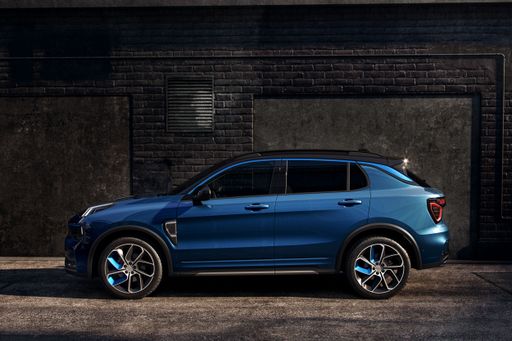Lynk & Co 01 vs Mitsubishi Outlander – Rendimiento, autonomía y consumo comparados
Dos coches, un duelo: Lynk & Co 01 se enfrenta a Mitsubishi Outlander.
¿Quién gana en rendimiento, consumo y relación calidad-precio? ¡Descúbrelo ahora!
The SUV Showdown: Lynk & Co 01 Versus Mitsubishi Outlander
In a rapidly evolving automotive landscape, the competition among SUVs is fiercer than ever. Today, we pit two plug-in hybrid SUVs against each other: the Lynk & Co 01 and the Mitsubishi Outlander. Both models come with promising features, but which one truly stands out? Let’s dive into the technical aspects and innovations that define these vehicles.
Power and Performance
The Lynk & Co 01 is a testament to modern engineering with its plug-in hybrid configuration delivering between 261 and 276 horsepower. It sports a dual-clutch automatic gearbox, ensuring a smooth drive on its front-wheel-drive system. The vehicle accelerates from 0 to 100 km/h in a respectable 7.7 to 8 seconds, reaching a top speed of 200 to 210 km/h. This SUV's electric motor, combined with a 14.1 kWh battery, allows for an electric range of up to 75 km, with an efficient consumption of 0.9 to 1 L/100km.
Meanwhile, the Mitsubishi Outlander steps into the arena with a slightly more powerful offering. The Outlander’s combined engine produces a robust 306 horsepower distributed across all four wheels, thanks to its all-wheel-drive configuration. Despite its greater curb weight of 2070 kg, it accelerates from 0 to 100 km/h in 7.9 seconds. It boasts an electric range of up to 86 km with an impressive fuel consumption of 0.8 L/100km, making it a winner on efficiency.
Design and Dimensions
When it comes to styling and proportions, both SUVs cater to the modern family with five doors and ample interior space. The Lynk & Co 01 stretches slightly over 4.54 meters in length, maintaining a width of approximately 1.86 meters and a height of about 1.694 meters. Its trunk offers a capacity of 466 liters, adequate for everyday needs.
In contrast, the Mitsubishi Outlander presents a larger palette, measuring 4.719 meters in length, 1.862 meters in width, and a stature of about 1.746-1.750 meters high. It edges ahead in practicality with its 495-liter trunk, making it more accommodating for larger family outings.
Technological Innovations
Both vehicles showcase cutting-edge hybrid technology, yet they focus on slightly different aspects. The Lynk & Co 01 leverages a dual-clutch automatic transmission technology, promoting a seamless transfer of power which complements its hybrid engine configuration designed for the urban commuter.
The Mitsubishi Outlander, on the other hand, emphasizes an advanced all-wheel-drive system, catering to those who value stability and traction, particularly in diverse road conditions. Moreover, with its lower CO2 emissions of 18 g/km compared to the Lynk & Co's 20 g/km, the Outlander edges towards being more eco-friendly.
The Ultimate Choice
Choosing between the Lynk & Co 01 and the Mitsubishi Outlander boils down to personal preferences and priorities. For those seeking a compact yet powerful urban SUV, the Lynk & Co might appeal more with its blend of power and style. However, for those prioritizing space, efficiency, and a potent all-wheel-drive system, the Mitsubishi Outlander stands out.
Both models hold their ground in terms of innovation and technological advancements, making them worthy contenders in the plug-in hybrid market. Whichever you choose, these SUVs promise a forward-thinking, sustainable driving experience.
Aquí vienen los hechos: las diferencias técnicas en detalle
Costes y consumo: En términos de economía diaria, ambos modelos muestran contrastes interesantes.
Lynk & Co 01 tiene una ventaja un poco en precio: parte desde 43700 €, mientras que el Mitsubishi Outlander cuesta 50800 €. La diferencia es de unos 7113 €.
También se aprecia una diferencia en el consumo: el Mitsubishi Outlander gasta 0.80 L y es algo más eficiente que el Lynk & Co 01, que consume 0.90 L. La diferencia es de unos 0.10 L cada 100 km.
En autonomía, el Mitsubishi Outlander ofrece un rendimiento un poco mejor: alcanza hasta 85 km, unos 10 km más que el Lynk & Co 01.
Motor y rendimiento: Potencia, par motor y aceleración dicen mucho sobre la experiencia de conducción. Aquí se ve cuál ofrece más dinamismo.
En cuanto a potencia, el Mitsubishi Outlander tiene una ventaja apenas perceptible: 306 HP frente a 276 HP. Eso supone un aumento de unos 30 HP CV.
En aceleración de 0 a 100 km/h, el Lynk & Co 01 es casi imperceptible más rápido: 7.70 s frente a 7.90 s. Es aproximadamente 0.20 s más veloz.
En velocidad máxima, el Lynk & Co 01 es en pequeña medida superior – alcanza 200 km/h, mientras que el Mitsubishi Outlander se queda en 170 km/h. La diferencia es de unos 30 km/h.
Espacio y practicidad: Habitabilidad, maletero y carga útil determinan la funcionalidad en el día a día. Aquí cuentan la comodidad y la flexibilidad.
Ambos modelos ofrecen espacio suficiente para 5 personas.
En peso en vacío, el Lynk & Co 01 es ligero más ligero – 1935 kg frente a 2070 kg. La diferencia ronda los 135 kg.
En capacidad de maletero, el Mitsubishi Outlander ofrece ligero más espacio – 495 L frente a 466 L. La diferencia es de unos 29 L.
En capacidad máxima de carga, el Mitsubishi Outlander es un poco mejor – hasta 1404 L, unos 191 L más que el Lynk & Co 01.
En capacidad de carga útil, el Mitsubishi Outlander notable se impone – 595 kg frente a 415 kg. La diferencia es de unos 180 kg.
En general, el Mitsubishi Outlander se muestra es claramente superior y se lleva el título de DriveDuel Champion.
Destaca por su equilibrio general y por ser el compañero más versátil en el día a día.
Lynk & Co 01
El Tesla Model 3 es una revolución en el mundo de los vehículos eléctricos, combinando un estilo moderno con una impresionante autonomía. Su sistema de entretenimiento interior y las características de conducción autónoma lo convierten en una opción atractiva para los automovilistas del siglo XXI. Con su enfoque en la sostenibilidad, el Model 3 no solo reduce la huella de carbono, sino que también ofrece una experiencia de conducción emocionante.
detalles @ press.lynkco.com
@ press.lynkco.com
 @ press.lynkco.com
@ press.lynkco.com
 @ press.lynkco.com
@ press.lynkco.com
Mitsubishi Outlander
El Mitsubishi Outlander se destaca por su versatilidad y diseño moderno, convirtiéndose en una excelente opción para familias y aventureros por igual. Su amplio espacio interior y la comodidad de sus asientos hacen de cada viaje una experiencia placentera. Además, el Outlander ofrece un avanzado sistema de seguridad que brinda tranquilidad a todos sus ocupantes.
detalles

|
|
|
|
|
Costos y consumo |
|
|---|---|
|
Precio
43700 - 47800 €
|
Precio
50800 - 60500 €
|
|
Consumo L/100km
0.90 L
|
Consumo L/100km
0.80 L
|
|
Consumo kWh/100km
-
|
Consumo kWh/100km
-
|
|
Autonomía eléctrica
75 km
|
Autonomía eléctrica
83 - 85 km
|
|
Capacidad de la batería
-
|
Capacidad de la batería
-
|
|
co2
20 g/km
|
co2
19 g/km
|
|
Capacidad del tanque
42 L
|
Capacidad del tanque
53 L
|
Dimensiones y carrocería |
|
|---|---|
|
Tipo de carrocería
SUV
|
Tipo de carrocería
SUV
|
|
Asientos
5
|
Asientos
5
|
|
Puertas
5
|
Puertas
5
|
|
Peso en vacío
1935 kg
|
Peso en vacío
2070 - 2120 kg
|
|
Capacidad del maletero
466 L
|
Capacidad del maletero
495 L
|
|
Longitud
4545 mm
|
Longitud
4719 mm
|
|
Anchura
1860 mm
|
Anchura
1862 mm
|
|
Altura
1694 mm
|
Altura
1746 - 1750 mm
|
|
Capacidad máxima del maletero
1213 L
|
Capacidad máxima del maletero
1404 L
|
|
Capacidad de carga
415 kg
|
Capacidad de carga
545 - 595 kg
|
Motor y rendimiento |
|
|---|---|
|
Tipo de motor
Híbrido enchufable
|
Tipo de motor
Híbrido enchufable
|
|
Transmisión
Automática
|
Transmisión
-
|
|
Detalle de transmisión
Caja automática
|
Detalle de transmisión
-
|
|
Tipo de tracción
Tracción delantera
|
Tipo de tracción
Tracción total
|
|
Potencia HP
276 HP
|
Potencia HP
306 HP
|
|
Aceleración 0-100km/h
7.70 s
|
Aceleración 0-100km/h
7.90 s
|
|
Velocidad máxima
200 km/h
|
Velocidad máxima
170 km/h
|
|
Par motor
535 Nm
|
Par motor
-
|
|
Número de cilindros
4
|
Número de cilindros
4
|
|
Potencia kW
206 kW
|
Potencia kW
225 kW
|
|
Cilindrada
1499 cm3
|
Cilindrada
2360 cm3
|
General |
|
|---|---|
|
Año del modelo
2024
|
Año del modelo
2025
|
|
Clase de eficiencia de CO2
B
|
Clase de eficiencia de CO2
B
|
|
Marca
Lynk & Co
|
Marca
Mitsubishi
|
¿El Lynk & Co 01 se ofrece con distintas tracciones?
Disponible con Tracción delantera.
Los precios y datos mostrados son estimaciones basadas en los precios de lista en Alemania y pueden variar según el país. Esta información no es legalmente vinculante.
